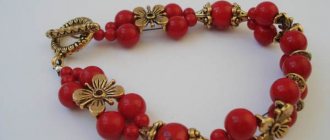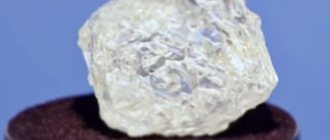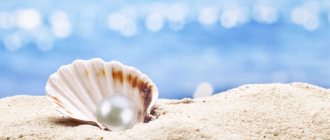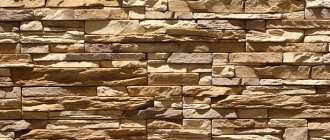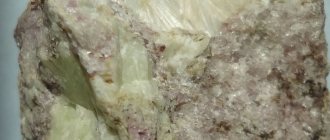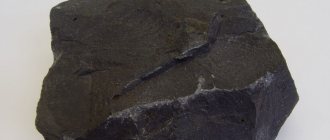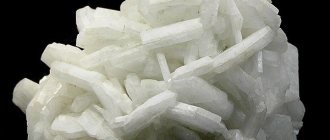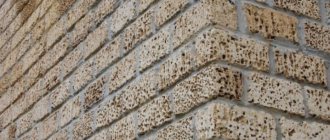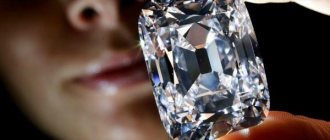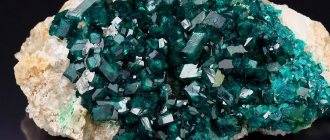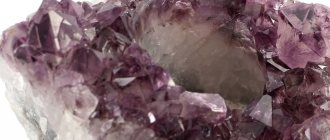Corals are amazing in their appearance and structure. These inhabitants of the seas and oceans outwardly resemble frozen lava, but in fact, they are full-fledged animals, polyps. It’s good that you can place this beauty in your own home aquarium with sea water and every day admire the bizarre forms and amazing life of these coelenterate inhabitants of the depths. We will consider further what corals to choose for the aquarium, which species is better to take a closer look at and how compatible they are with other inhabitants.
What are the different shapes of corals?
Corals differ from each other, first of all, in their bizarre shape. There are several common classes, one of which has already become extinct.
Eight-beam
Eight-rayed are common polyps that look like small, voluminous bushes right on the rocks or on the seabed. They are small in height, rarely exceeding 1 cm. They received the name “eight-rayed” due to the fact that they have eight tentacles and partitions located on the cap.
Eight-rayed - common polyps, similar to voluminous bushes
Six-beam
Another common type of polyp. Their peculiarity is that they can grow singly, and sometimes they are found in clusters and colonies. They are characterized by not eight, but six rays in the form of tentacles.
It is less common to find five or even ten tentacles. But this is rather an exception
Common species, can grow singly
Quadruple
This type of polyp has been lost and is considered extinct. They were widespread during the period BC and Paleozoic times.
Magic properties
Regardless of color, coral is a powerful talisman with specific magical properties. It is better to wear it during the waxing moon, and to refuse wearing it during the full moon.
Even in ancient times, the mineral was credited with many mystical qualities, for example, protection from thunder, lightning and the wrath of the gods. To this day, the magical properties of the stone are recognized by mineralogists and lithotherapists, who recommend wearing it as a talisman against the evil eye or damage. It is safe even for small children.
Red coral is a strong amulet for people who love to travel. It has the ability to protect from troubles that await travelers on the way, from the violence of nature: storms, thunderstorms.
A specimen with a reddish color gives a person energy and strength, while a specimen with a pink color gives a person tenderness.
This natural stone will bring success and prosperity to your home. To do this, take it and walk clockwise through all the rooms, touching all window and door openings.
Types of corals by color
Nature has done its best, and on the ocean floor you can find polyps of various colors and shades, and many of them can be placed in a marine-style aquarium. The following colors are considered the most common:
- brown;
- red;
- beige;
- white;
- dairy;
- pink;
- blue;
- green;
- peach;
- black.
On the ocean floor you can find polyps of various colors
Yellow and pearlescent corals are less common. Violet shades are very rare.
Some have heterogeneous colors, and their bodies are painted in two or three contrasting shades. Other species change color depending on the time of day, water temperature and other conditions.
Medicinal properties
Since ancient times, stony corals have been known for their healing properties. Even in ancient Rome, they were used to make a powder that helped wounds heal faster and bones grow together. The Romans considered them an excellent antidote for snake bites. Now lithotherapists also do not deny the healing properties of coral.
It has been proven that black mineral cures nervous diseases: depression, breakdowns and tics. In addition, it helps improve memory and blood supply to the body. Helps to lose weight as it removes toxins and reduces appetite.
Since the mineral contains calcium, you can simply dissolve it in water and drink it, which is much healthier for the body than drugs from the pharmacy.
The stone can be a harbinger of an approaching illness. If dark spots or even cracks suddenly appear on it, it means there is a problem in the body. In this case, you should seek medical advice.
It is also known that the mineral has unique properties and significance for people whose work involves the voice. Constantly wearing beads will be useful for them.
The stone develops intuition and logic; psychologists and parapsychologists often use it in their practice.
However, constant wearing of the mineral is not recommended, as a person will soon become too lazy and capricious.
Top most unpretentious soft corals
Soft corals for a marine aquarium are the best solution, as they are unpretentious to the conditions and have a spectacular appearance. We will talk about the most common types.
Gorgonians
Resident of the Pacific depths. If you look closely, from a distance it resembles a branched tree of a bizarre shape. In height with active growth it can reach 50 cm.
An excellent decorative element for an aquarium. It is not afraid of strong currents, the optimal water temperature in the aquarium is from +22 to +27 degrees Celsius. Needs frequent feeding to grow and develop. Eats phytoplankton and debris from the bottom.
Because of its color it is called black coral. However, the true shade is brown, and the blackness appears due to lack of sunlight.
Gorgonians are an excellent decorative element for an aquarium.
Like other Red Sea corals, it prefers low levels of salinity and acidity.
Sarcophytons
One of the most common polyps in the Pacific region. Similar to sedum. It is large in size, and two-meter specimens can be found on the ocean floor. In an aquarium, the volumes are much more modest.
Prefers temperatures from +22 to +28 degrees Celsius. Acidity and hardness should be low.
Nutrition comes from algae; phytoplankton is also suitable.
Sarcophyton is the most popular species in the Pacific Ocean
Releases toxins that are harmful to stony corals and some types of algae.
Clavularia
A soft coral that looks spectacular on the seabed, especially when lying on rocks. This may explain its incredible popularity among aquarists. Most often found in the Pacific region. Clavularia looks like a small tree with a lush crown. It reaches 2-3 cm in height.
In an aquarium, it spreads on the stones like a rug and looks impressive.
It does not tolerate proximity to stony corals, as it very often suffers from the substances that they secrete.
If conditions are suitable for clavularia, it grows quickly.
Prefers water temperature from +22 to +27 degrees Celsius, hardness 1.023-1.025, acidity 8.1-8.5.
Clavularia in an aquarium looks very impressive
It feeds on symbiotic algae and plankton.
Cladiella
Another popular soft coral from the Pacific region. Does not grow singly, preferentially in colonies. It can reach a height of 1.5 m. However, in an aquarium its dimensions are less impressive, reaching up to 10 cm.
Feels good in an aquarium of 100 liters of water at a temperature of +21 to +26 degrees Celsius. Acceptable hardness is 1.023-1.025, acidity is 8.1-8.3.
They feed on symbiotic algae. Sensitive to damage.
Cladiella does well in large aquariums
Cornularia
Representative of the Indonesian region. It grows only in colonies, the height reaches 2 cm. If the conditions are suitable, then it grows, forming a kind of mat.
It is a decorative element of the aquarium and looks impressive on the bottom.
Feels good in an aquarium with a volume of 100 liters or more. It is important to ensure good water circulation and filtration.
The temperature should range from 22 to 27 degrees Celsius. Ideal acidity is from 8.1 to 8.3, hardness is from 1.023 to 1.025.
Nutrition is provided by the remains of algae or phytoplankton.
For cornularia it is important to ensure good water circulation
What is a coral polyp?
It would be more correct to ask “who is this,” because only at first glance it seems that coral reefs are piles of calcareous formations consisting of the skeletons of dead polyps. But in fact, if we are talking about a living reef, coral polyps are animals. And also on the same reef there may be skeletons of dead polyps that make up the skeleton of the reef. And on the surface there may be living polyps.
So, Red Sea coral polyp is a living organism belonging to the species Cnidari phylum. It has sizes from 1 to 30 mm. The polyp consists of tentacles and a gastric part. The tentacles have special stinging cells that secrete a burning liquid to catch prey. Polyps feed on plankton. As we said earlier, living corals actively coexist with zooxanthellae - special algae that give polyps their color. Coral polyps of the species Cnidari phylum also include jellyfish and sea anemones , which are participants in the life cycle of the polyps.
Observing the life of corals, you can compare them with plants that live on land. Let's look at several of their varieties.
Pros and cons of artificial products
Artificial corals for aquariums are easy to care for and affordable, so many aquarists purchase them to transform their tank.
Most often, such products are made of silicone or synthetic material, they are very easy to wash off dirt, and the appearance is no different from natural ones.
Artificial corals have many positive aspects:
- High practicality, environmental friendliness.
- Durability, duration of use. They are unpretentious to the conditions, they will not be affected in any way by a decrease in temperature or an increase in acidity.
- In specialized stores you can purchase artificial corals of any color and shape, thus creating your own spectacular compositions in the aquarium.
Mostly such products are made of silicone or synthetic material
However, at the same time, such products also have disadvantages:
- High price. High-quality artificial coral is expensive, as it must be as lifelike and durable as possible.
- Its artificial color is lost and fades over time.
- If you bought an inexpensive product, then do not rush to rejoice. Most likely, it is made of low-quality or toxic materials, which may harm the inhabitants of the aquarium.
Carefully monitor the condition of fish and invertebrates, and if after installing the coral they begin to behave differently, immediately remove the decorations.
How to distinguish from a fake
Pink coral bracelet
Corals are in great demand among lovers of natural stones, so they are often tried to be counterfeited. Unscrupulous sellers try to pass off colored plastic, glass, and cheaper gems (for example, quartzite) as a sea mineral.
The distinctive features of corals from synthetic fakes are:
- A light weight. Due to its porous structure, coral is very light. Its specific gravity is much lower than that of glass and even plastic.
- Color stability. Painted plastic will change color when exposed to citric acid and vinegar.
- High thermal conductivity. Coral is warm to the touch and quickly heats up in your hands. This same property is characteristic of glass and plastic, but distinguishes the sea mineral from simulant stones formed in the bowels of the earth.
- Drawing and color. Real coral has a patterned mesh on its surface, and the shades smoothly transition from one to another. Upon contact with water, the pattern of real coral will become more contrasting and brighter, which cannot be said about painted glass or plastic.
- Hardness. Coral is a very fragile mineral, it is easy to scratch and break.
Also, evidence of a fake can be a very low cost of products. If you want to purchase jewelry with corals, you should contact trusted jewelry stores.
How to choose
Before you go shopping for coral, you need to put the aquarium in order and restore the ecological balance inside. Only after this you will go in search of new inhabitants:
- The purchase of coral should only take place in a specialized store. But it’s better to refuse the idea of taking a polyp from a friend, since in this way you are more likely to transfer bacteria and other substances from his aquarium to yours, which can provoke a surge in diseases in its inhabitants.
- When buying coral in a store, make sure that you are given particles of substrate along with it. This is necessary in order to increase the viability of the acquisition. If you are offered a polyp without a substrate, you should refuse; most likely, it will not take root.
- Before purchasing a particular polyp, be sure to find out with whom its proximity is acceptable. Aggressive and non-aggressive species do not get along well with each other. Some bottom dwellers emit substances that can be harmful to other inhabitants of the aquarium or even to humans.
Purchasing coral should only be done in a special store
Consider the conditions that have already been created in your aquarium. This applies to water temperature, acidity, hardness, lighting. Not all polyps fit these characteristics.
Coral in astrology
Organic stone is of no small importance in astrology. It is associated with the planet Neptune and the water element.
From an astrological point of view, this mineral is not suitable for all zodiac signs. First of all, Virgos and Capricorns should avoid any contact with him.
The best compatibility is with Pisces and Cancers, because it is a “water” stone. Pisces prefer brown or red colors, while Cancers prefer pink. For other zodiac signs, the energy of the stone will also be positive.
Coral can bring good luck to people born in the year of the Tiger or Cat.
Astrologers advise women to wear a white gemstone, and men to wear a red one. If you do not follow this rule, then a woman will acquire rude character traits characteristic of men, and vice versa.
Content recommendations
In order for the coral to feel free inside the aquarium, the tank must be at least 400 liters. Other tips:
- The optimal water temperature for both corals and marine life is from +22 to +27 degrees Celsius.
- Make sure the water is clean, with good hardness and acidity levels. This is necessary to ensure growth for the marine inhabitants.
- The water must constantly circulate, thus purifying itself and creating a flowing effect.
- Lighting should be suitable for both polyps and other inhabitants. Keep your balance, otherwise the sea inhabitants will begin to die.
- Corals are best placed on a rocky bottom, where they calmly take root. You can fix it using special solutions or glue.
- If you notice dead corals in the aquarium, you should not get rid of them. They can also remain in the tank, turn to stone, and become a kind of decoration.
- Provide the corals with constant and adequate nutrition. To do this, study in advance what is edible. Some feed on phytoplankton, others on algae, and still others are predators and prefer small meat.
For the coral to feel good, the aquarium must be at least 400 liters
Determining when it is time to feed a coral is simple: as soon as it begins to produce polyps, it is time to serve food. But the size, quantity and quality of food depends on the type of coral itself.
Corals are small builders of huge reefs
Styllophora wellsi
The reefs of the Red Sea can be called oases of a vast desert. The secret of their existence lies in the specific biology of hard corals. All of them are living organisms - polyps that form colonies. These creatures absorb the calcium carbonate they need for life, building their skeletons from it. Over many millennia, layering one upon another, more and more new organisms are capable of creating a gigantic colony.
Design options
Using corals on the bottom, you can create spectacular compositions, making the tank a real work of art.
Corals are combined with driftwood, artificial stones, and other decorative elements and accessories for aquariums.
Let's look at several options for beginners that you can do yourself.
A Tale from Coral
First, take care of what the background of the aquarium will be. Often aquarists use film or paint one side in solid shades. The bottom is lined with pebbles, shells, balls, and stones.
Often, for such a composition, artificial algae are purchased, which are placed in the corners.
Beautiful aquarium with corals and algae
Corals are placed on the rocks, which take several days to take root.
Pseudo-sea
This is also a common decor for an aquarium. To create, you will need a substrate, which consists of marble chips, quartz and sand.
In addition, shells, petrified corals, and futuristic “wrecks” of a ship can be used as decorative elements.
After the bottom is covered, pre-prepared polyps can be placed. It is better to do it chaotically, thus creating the effect of the seabed. Using your imagination, acquiring different types of corals, which can coexist with each other, you can create compositions.
Pseudo-sea version of the aquarium design
Coral is not only an aquarium decoration. This is a pet that requires proper care. It is very interesting to watch it, because the polyp also has its own habits, reactions, and most importantly, it adapts to the conditions of the tank and other inhabitants.
If your aquarium looks boring and lifeless, then it’s time to think about buying corals and turning it into a marine kingdom.
Have you grown corals in your aquarium? Share your experience with newcomers in the comments.
Is it possible to get injured on coral?
Yes . If your body comes into contact with coral, you can cut yourself or get burned by their poison .
What to do to avoid cutting yourself on coral?
If you are going to swim in a place where there is a large concentration of coral, be sure to wear coral slippers and try not to touch the reefs with parts of your body .
What to do if you are burned by coral poison?
As we wrote above, corals secrete a special burning liquid to hunt plankton. A careless swimmer, due to his carelessness, can also be regarded as food by living coral. First, a burn forms at the site of contact with the coral , which then becomes an ulcer . This ulcer may not heal for a very long time. also develop .
